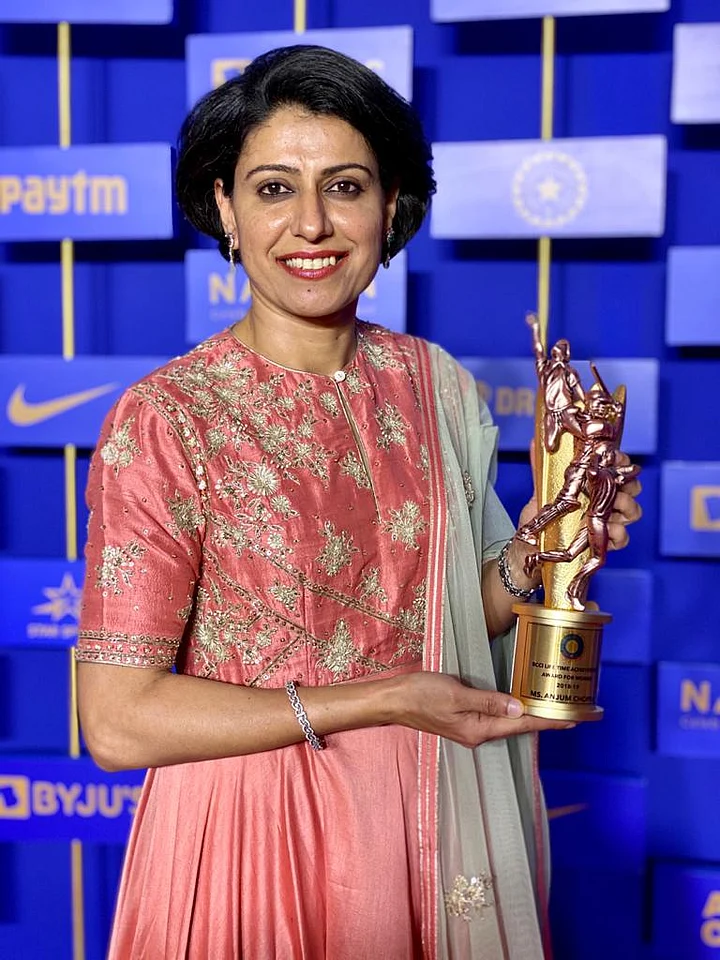From her international cricket debut at the age of 17 in 1995 to now, when she’s one of the world’s foremost female cricket broadcasters, Anjum Chopra’s career has seen many highs, many firsts and also, many lows.
She’s seen Indian women’s cricket a time when players were hardly even paid to play a match for the country and she’s tracked the developments in the last decade when the BCCI has caught up with the changing times and announced central contracts for women cricketers.
Her 17-year-long career saw her become the first female cricketer in the world to play 100 one-day internationals and also the first Indian woman to score an ODI century. A veteran of six cricket World Cups, Anjum Chopra shares memories from his career both on and off the field, in this edition of Spotlight.

You made your debut in 1995 and had many successful seasons for India but in 2007, you found yourself dropped from the Indian team for reasons you have said were not based on your performance. Did it ever strike you to just leave the sport, especially considering your education qualification, as you have an MBA degree as well?
Yes, many times. After my MBA got over and everybody else was going and starting work and I was sitting at home still trying to take files from one table to another in government organisations to allow me to get employed with them and play cricket. So that was one of the times when I thought I should quit playing cricket because it was not a paying job and it was not going to be paying my bills, as time progresses.
I was the captain of the Indian team but it didn’t really matter because those accolades, after some time... they don’t pay your bills.
Also, whenever I got dropped, I didn’t think that I wasn’t good enough. I knew for sure that I was much better than the players who were playing. I knew for sure that I was the best person to captain India and when I was removed from captaincy, I knew it was just because of regionalism and biases. It was not because of performance. Because there was no way that I could be dropped on performance. So that really didn’t deter me from the target as my job was always to play well for India and to perform for India.
You played cricket when not many even knew India had a women’s cricket team. It was a time also when players were hardly even paid and some had to take leave without pay to play matches. Things were a lot different than they are now?
We didn’t get any DA (dearness allowance) when we played and yes, there was no question of getting any match fee because the Women’s Cricket Association of India (WCAI) wasn’t a rich body, they were really a ‘hand-to-mouth’ organisation and just ensured they could get cricket on the park.
2005 was a big year for international cricket. It was when the ICC merged with the women’s cricket body and you’d think that things changed for women’s cricket in the world. What was it like? A year before and a year after 2005? Did a lot change now that you had funding and support?
One year before and one year later, only the logo on the shirt changed, nothing else. At the end of the series we used to get a cheque for Rs 90,000. It was a lakh of rupees and 10 percent TDS was cut and we used to get Rs 90,000 for a series. So, not much changed.
But, slowly and steadily, players got access to the National Cricket Academy (NCA) in Bangalore and their respective state associations’ practice areas. A little more streamlining also happened. We didn’t have to take trains for 36 hours or the 2-day journeys we were used to, and we started flying to match venues. Accommodation and logistics were all handled and petty cash used to get paid to us for a match.
T20 match was around Rs 1,000 and a one-day game was around Rs 1,500-1,600 as match fee, in domestic cricket. International it was slightly more.
(At The Quint, we are answerable only to our audience. Play an active role in shaping our journalism by becoming a member. Because the truth is worth it.)